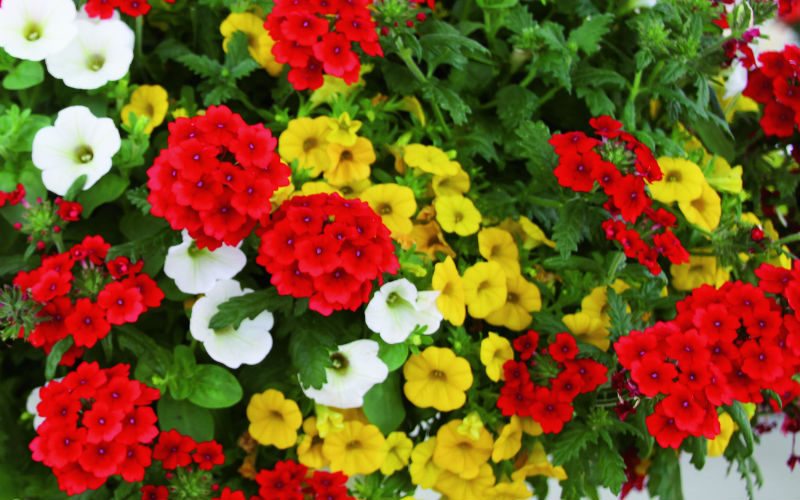
Modern Mixability
We have all seen them over the years. They have caught our eye from afar and drawn us in for a closer look and our unrequested two cents, horribly ugly combinations. Shade with sun, aggressive with compact, enormously upright and sadly trailing and colors that look more like a clown exploded than a conscious effort towards beauty.
Program reliability as it pertains to combinations has been elusive in the past for growers throughout the nation. While putting together colors in combinations that work well is a strong asset for many production planners, having the vigor among multi-genus mixes match can leave many combos with a lone item making it through the season.

The advent of the Confetti liner in 2008 brought forth a new philosophy for all production greenhouses. Predictable results for not only the grower, but also the end consumer. Plants that will not only root at the same speed in the liner, but also compete on the same level in the finished container, with the same nutritional needs and chemical tolerance.
The unique structure of a multi-stuck plug forces controlled competition within a small space. This creates a more intertwined combination for a well- rounded shape as opposed to single liner spaced, which can produce irregular shapes and pockets of color. This uniformity of production allows greenhouses to have their crews plant combinations on a large scale with no surprise mishaps of having the wrong tray pulled.
Trialed and Tested
Every year, the Dümmen Orange team, in conjunction with key growers throughout North America, tests hundreds of mixes. From these trials we select only a few mixes that meet the high standards of programmability. Currently, Dümmen Orange has 110 mixes available in our 2016/2017 product assortment. The original multiliners of petunia, calibrachoa and verbena are still among the most popular, but advances in genetics have lead way for combinations containing lobularia, portulaca and lantana.
Production greenhouses have the ability to choose mixes not only based on color, but also marketable performance throughout the season. Early spring, April for many of us, the focus is on on petunias, bacopa and lobelia for the tolerance of cool nights. Midseason sales in May open the calibrachoa and all multi- genus mixes sales window. Late season allows for quick turns on portulaca and lantana.
The ability to keep in mind not only the growth requirements by genus, but the retailer’s ability to hold high-quality combinations over varying environmental pressures is key to successful product sell through. I am constantly amazed at a consumer’s recollection of what works for them year to year. While they may not know the name calibrachoa, they do remember that Confetti Hawaiian Luau was a great performer and return year after year asking for it specifically.
In the earlier years of the Confetti program, orders focused around basket production. This made good sense as the baskets are held high and can be difficult to see issues at times. The multiliners removed the need to check for uniformity. The last few years have shown a tremendous uptake in 6-inch production. This is in reaction to consumers’ desire to use their own pots but still achieve desired results. This works well with using two or three 6-inch mixes for large pots allowing for the option of a grass or cordyline center piece. A unique look without sacrificing consistency. The smaller pot option is a favorite among growers as well. It maximizes square footage profitability with a strong price point and a shorter crop time, allowing for multiple turns in one season.
If you are among the few growers that feel using a multiliner is too mainstream and doesn’t provide you a unique look, please, take another glance at the offerings. Dümmen Orange alone has enough options to satisfy even the most discerning of clients.


 Video Library
Video Library 




















